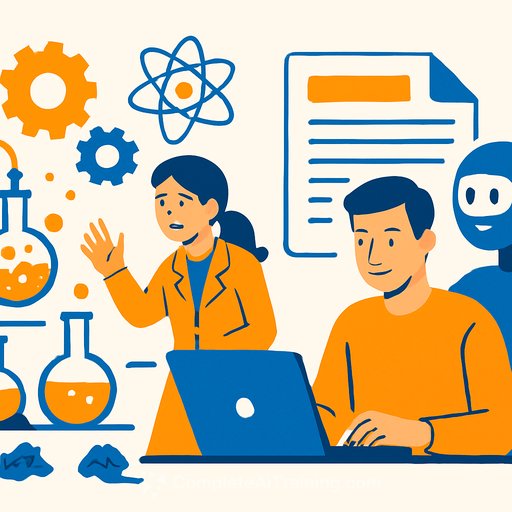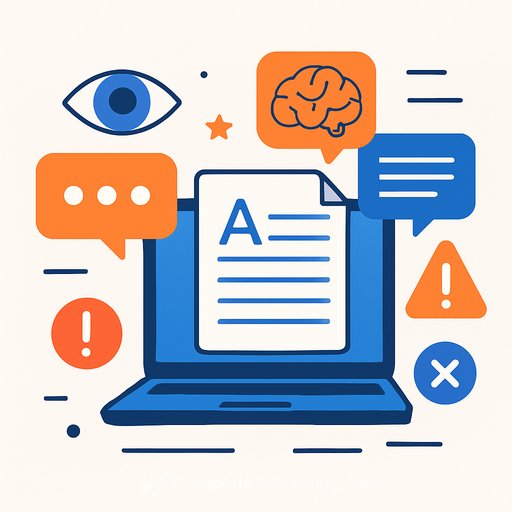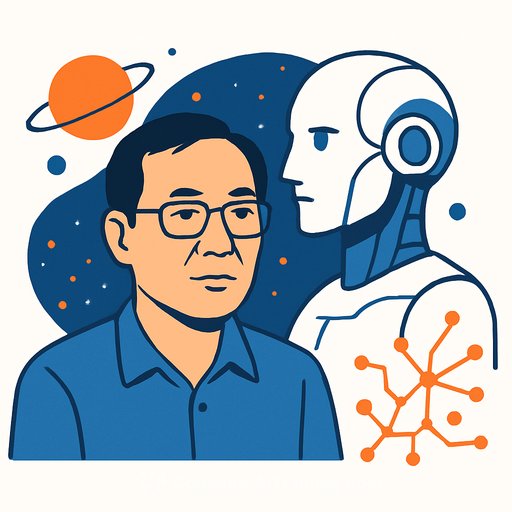Writing with AI turns chaos into clarity
Good writing is hard thinking. As Pat Conroy put it, turning difficult ideas into lucid language is the real work. Science writing raises the stakes because discovery is messy while the page demands order.
AI can help with that gap-not by thinking for you, but by giving your thinking somewhere to land. Treat it like a creative whiteboard: a place to sketch, test, and refine, fast.
Use AI like a whiteboard, not a ghostwriter
When you're stuck, ask for structure, not sentences. "What's the clearest way to explain this mechanism?" yields options you can judge against your expertise. The friction you want is in choosing and refining, not staring at a blinking cursor.
Example: while drafting a grant on cellular stress responses, the data pointed to oxidative damage and a cascade of proteins, but the throughline was unclear. Iterating with AI surfaced overlapping themes from the literature and a possible common mechanism worth testing. The insight came from the back-and-forth; the decisions came from the human.
A lean workflow you can copy
- Brain-dump the problem: audience, goal, constraints, and the raw facts you know.
- Ask for 3-5 ways to structure the piece (problem-solution, timeline, cause-effect, FAQ, analogy-first).
- Pick one, then ask for the minimum set of paragraphs and the single sentence that crowns each section.
- Request counterarguments and failure modes to stress-test your outline.
- Draft the key paragraphs yourself. Use AI to tighten, not to think.
- Run a "clarity pass": ask for simpler phrasing, sharper verbs, and shorter sentences-without changing meaning.
- Verify every technical claim. Cite sources you've read, not guesses.
Prompts that actually help
- "Give me three structures to explain [topic] to [specific audience] in 800-1,000 words. List the headline and 3-5 section headers for each."
- "What are the most common misconceptions about [topic]? Rank by likelihood and impact, then propose fixes I can add to my draft."
- "Rewrite this paragraph at a 10th-grade reading level, keep technical accuracy, and preserve my tone: [paste paragraph]."
Guardrails that keep your thinking sharp
- Use AI to see options. You choose the narrative.
- Preserve your voice: feed 2-3 sample paragraphs, then ask it to match that voice.
- Protect sensitive data. Don't paste anything confidential.
- Disclose assistance when context or policy requires it.
- Fact-check everything. AI drafts; you validate.
Teaching writers and scientists to use AI well
The question isn't whether AI replaces writers. The question is how writers use it to think more clearly. As Melvin Kranzberg noted, technology is neither good nor bad; nor is it neutral. That's a call to build better practices, not to outsource judgment.
Practical drills beat lectures. Make AI a tool inside a rigorous process, not a shortcut around it.
- Structure sprints: generate multiple outlines, defend one, and iterate.
- Source audits: extract claims from a draft, attach citations, and verify.
- Bias checks: ask AI to list what the piece might be missing and why.
- Rewrite loops: compress a section to 50%, then rebuild clarity without losing meaning.
Further reading and tools
For a timeless take on revision, see On Writing Well. For context on tech's social effects, review Kranzberg's Laws.
If you want vetted tools to speed up drafting and editing, explore this curated set of AI tools for copywriting.
The bottom line
Use AI to expose structure, pressure-test ideas, and streamline revision. Keep the thinking-and the voice-yours. That's how chaos becomes clarity on the page.
Your membership also unlocks:






